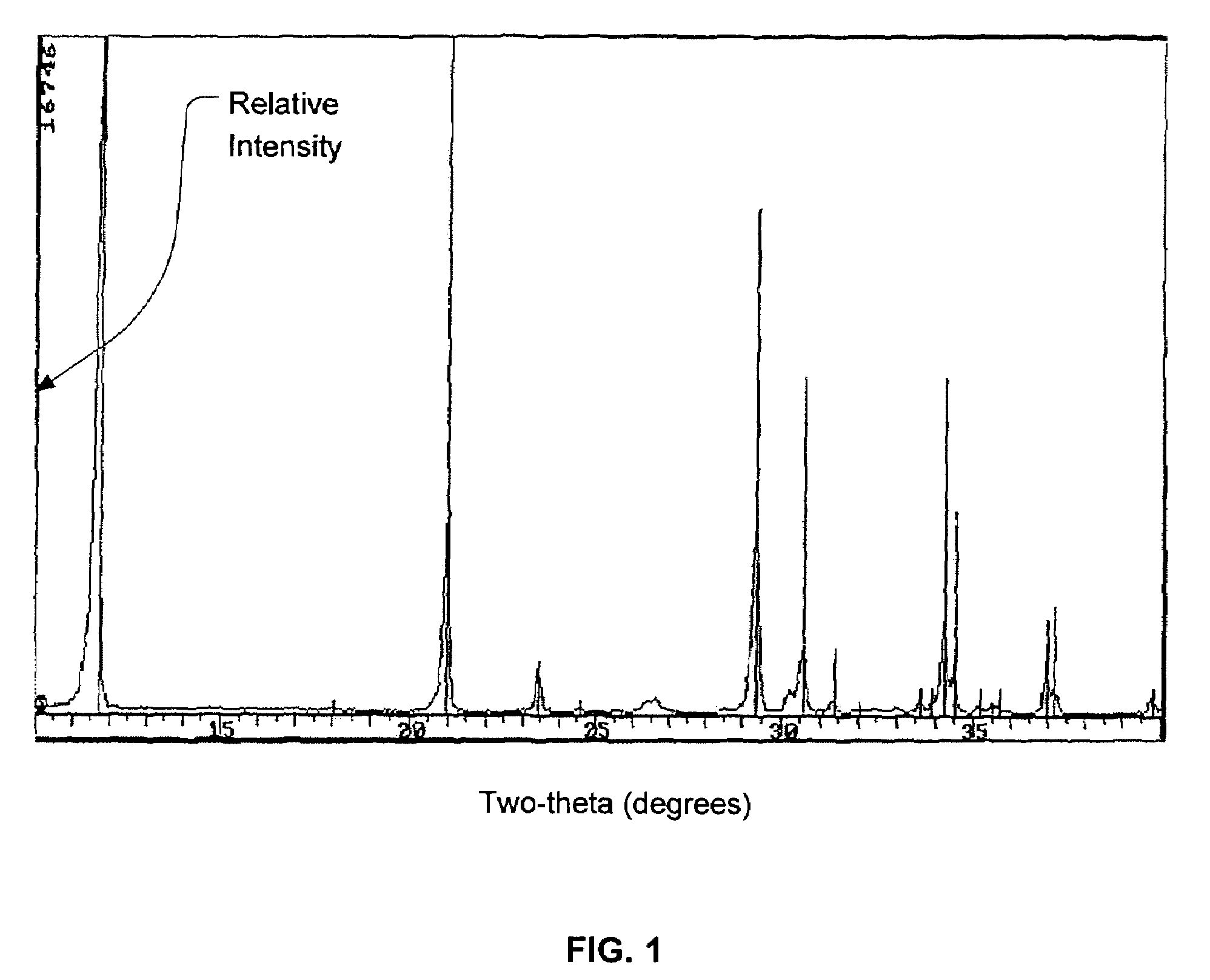Calcium phosphate cement
a calcium phosphate bone cement and calcium phosphate technology, applied in the field of calcium phosphate minerals, can solve the problems of deterioration effect, long-term stability of these components, and insufficient research on long-term stability of these components, and achieve the effect of rapid setting and long-term shelf-li
- Summary
- Abstract
- Description
- Claims
- Application Information
AI Technical Summary
Benefits of technology
Problems solved by technology
Method used
Image
Examples
example 1
A. Production of Dicalcium Phosphate Dihydrous with 40 ppm of Magnesium
(1) 30% Phosphoric Acid Solution Preparation with 40 ppm Magnesium Addition.
[0024]To make the required 30% concentration of orthophosphoric acid (H3PO4), in a 5 ltr stainless beaker, 261±2 mls of 85% orthophosphoric acid was added to 737±2 mls of deionized water and the beaker was placed on top of a hot plate set to 45° C. Then the temperature probe was placed in the beaker to measure the temperature of the acid solution and the hot plate was turned on to heat the solution to 45° C. The solution was then stirred at a speed of 200±10 rpm to ensure that the probe was measuring a true representation of the beaker content. While the acid solution was being heated to 45° C., 0.0413 grams of magnesium oxide (MgO) (equivalent to about 40 ppm magnesium content or about 0.006883% based on the weight of the DCPD) was added to the solution. Then the pH probes and temperature probes were calibrated and put into the acid solu...
example 2
A. Production of Dicalcium Phosphate Dihydrous with 60 ppm of Magnesium
(1) 30% Phosphoric Acid Solution Preparation with 60 ppm Magnesium Addition
[0050]To make the required 30% concentration of orthophosphoric acid (H3PO4), in a 5 ltr stainless beaker, 261±2 mls of 85% orthophosphoric acid was added to 737±2 mls of deionized water and the beaker was placed on top of a hot plate set to 47° C. Then the temperature probe was placed in the beaker to measure the temperature of the acid solution and the hot plate was turned on to heat the solution to 47° C. The solution was then stirred at a speed of 200±10 rpm to ensure that the probe was measuring a true representation of the beaker content. While the acid solution was being heated to 47° C., 0.0620 grams of magnesium oxide (MgO) (equivalent to about 60 ppm magnesium content or about 0.0085% based on the weight of the DCPD) was added to the solution. Then the pH probes and temperature probes were calibrated and put in to the acid soluti...
PUM
| Property | Measurement | Unit |
|---|---|---|
| volume | aaaaa | aaaaa |
| temperature | aaaaa | aaaaa |
| weight | aaaaa | aaaaa |
Abstract
Description
Claims
Application Information
 Login to view more
Login to view more - R&D Engineer
- R&D Manager
- IP Professional
- Industry Leading Data Capabilities
- Powerful AI technology
- Patent DNA Extraction
Browse by: Latest US Patents, China's latest patents, Technical Efficacy Thesaurus, Application Domain, Technology Topic.
© 2024 PatSnap. All rights reserved.Legal|Privacy policy|Modern Slavery Act Transparency Statement|Sitemap



